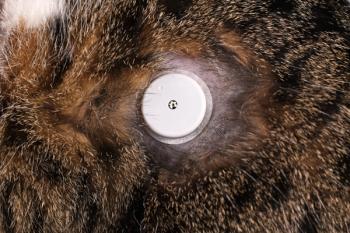
Vet Watch: Tips and pitfalls of dermatology in the new age of isoxazolines
Introducing Vet Watch! Christopher Lee, DVM, MPH, DACVPM, and Alice Jeromin, DVM, RPh, DACVD, discuss the clinical benefits and practical applications of isoxazoline parasiticides for year-round ectoparasite control.
Alice Jeromin, DVM, RPh, DACVD, and host Christopher Lee, DVM, MPH, DACVPM, open the premiere episode of Vet Watch with a comprehensive exploration of how isoxazoline parasiticides have revolutionized ectoparasite management in small-animal practice. In the episode, Jeromin and Lee discuss the mechanism of action of these parasiticides, their extralabel uses, and the different isoxazoline products available, detailing their differences, doses, and duration. They also share diagnostic tips and anecdotes about older treatments before the advent of isoxazolines and talk about the challenges of public education on flea treatment, including incorrect use of products and more.
Check out the episode above to hear the full dialogue and deepen your understanding of these transformative compounds. Your next challenging case of unexplained pruritus may have a simple, science-backed solution.
Below is a partial transcript of the video, which has been lightly edited for clarity:
Christopher Lee, DVM, MPH, DACVPM: Today, we're talking about isoxazolines, or as they’re called, "isox." So to help everyone get on the same page—I don't know, the first time I heard of isox, I thought they were Bluetooth leggings that I had to have for some reason. So, what are isox? How do they work, and what are they?
Alice Jeromin, DVM, RPh, DACVD: First of all, every veterinary dermatologist you can ask is in love with isoxazolines. We'll get into the reason for that later, but they are both insecticidal and acaricidal, which means they're pretty good at what they do for insects, fleas, ticks—that kind of thing.
Thankfully, we've got several to choose from. Their method of action is that they antagonize GABA [gamma-aminobutyric acid], which is...like a double negative. I always think of GABA as an inhibitory neurotransmitter. So they're antagonizing an inhibitory neurotransmitter, which in turn controls chloride channels. They also—at least in invertebrates—antagonize glutamate-driven chloride channels. So there's kind of a 2-fold mechanism of action in invertebrates, and invertebrates—like mammals, us—they do...the antagonism of GABA, which is a real long mouthful, but it just results in hyperpolarization, and then the being dies. We know that insects are much more sensitive [to] these GABA receptors than mammals are. So that's good because we don't want to have any of the neurological issues that can occur with some of these insecticides and acaricides, particularly the GABA-mediated ones.
Christopher Lee, DVM, MPH, DACVPM: Yeah, it's great having that level of safety. And speaking of safety and just overall efficacy...you and I have both been practicing veterinary medicine for a while, so when we look at it and you have over 35 years of experience...for some of our listeners [who don’t]—let's kind of go back. I think you and I both remember 1993 when Frontline was first law. What was it even before that? Do you have any stories from [the pre-Frontline era]?
Alice Jeromin, DVM, RPh, DACVD—Before earning her DVM degree from The Ohio State University, Jeromin graduated from the University of Toledo with a BS in Pharmacy and practiced as a hospital pharmacist. She completed her veterinary dermatology residency with Patrick Breen and dermatopathology training at Procter & Gamble, Miami Valley Labs, as well as a fellowship in human dermatology at MetroHealth Medical Center, Cleveland, Ohio, with Bryan Davis. Jeromin is currently an adjunct professor at Case Western Reserve University, lecturer at Northeast Ohio Medical University College of Pharmacy, and former practice owner of Veterinary Allergy & Dermatology, Inc. She is a former member-at-large on the American Veterinary Medical Association's Council on Biologics and Therapeutic Agents as chairman of the supplements and compounding committees. Along with publishing in human and veterinary journals, she authored the dermatology chapter in Pharmacotherapeutics for Veterinary Dispensing. Her interests include human-animal comparative dermatology and skin lipid research, with publications in both areas. Because of her pharmacist background of counseling patients, she is a strong believer in client education and maintains her website,
Newsletter
From exam room tips to practice management insights, get trusted veterinary news delivered straight to your inbox—subscribe to dvm360.






